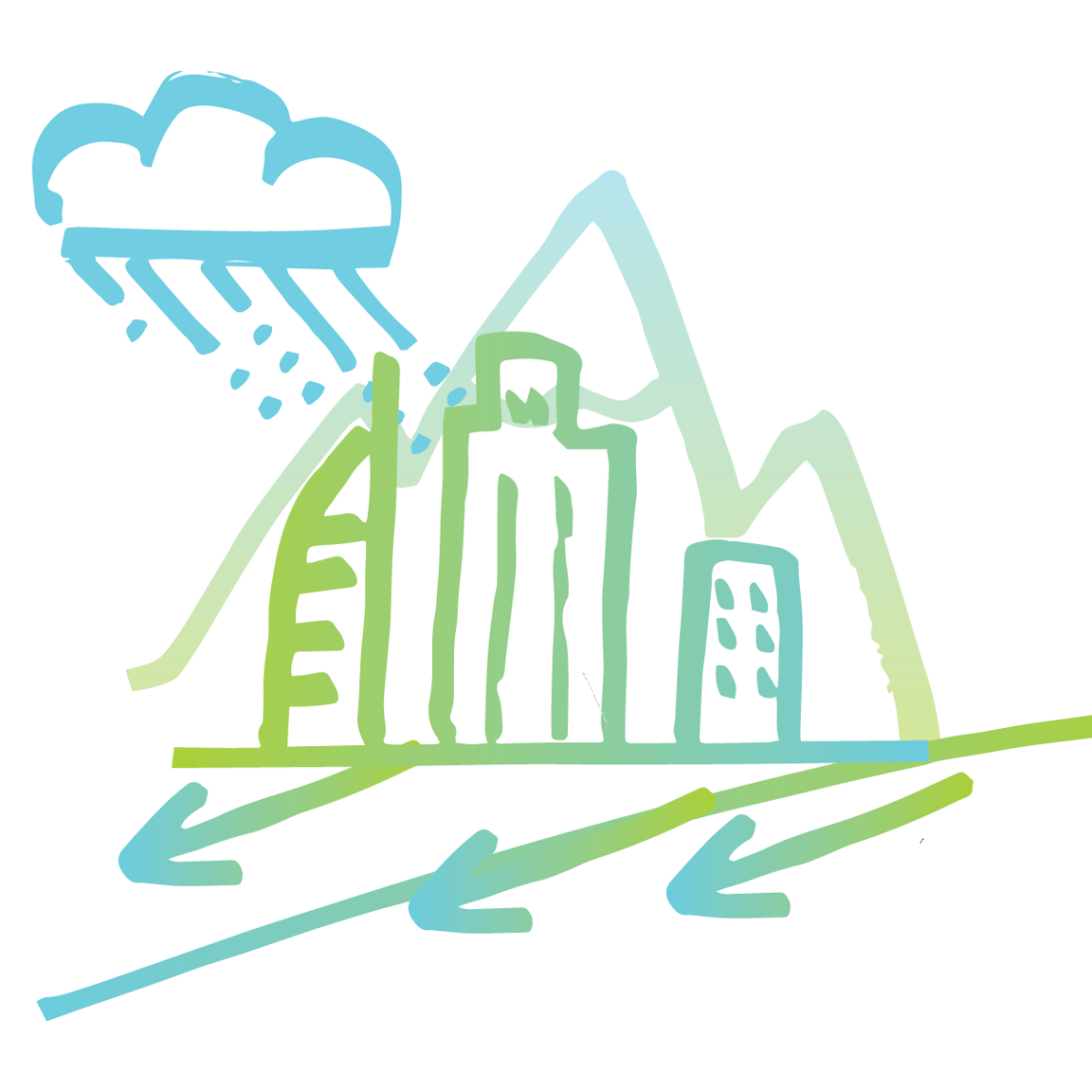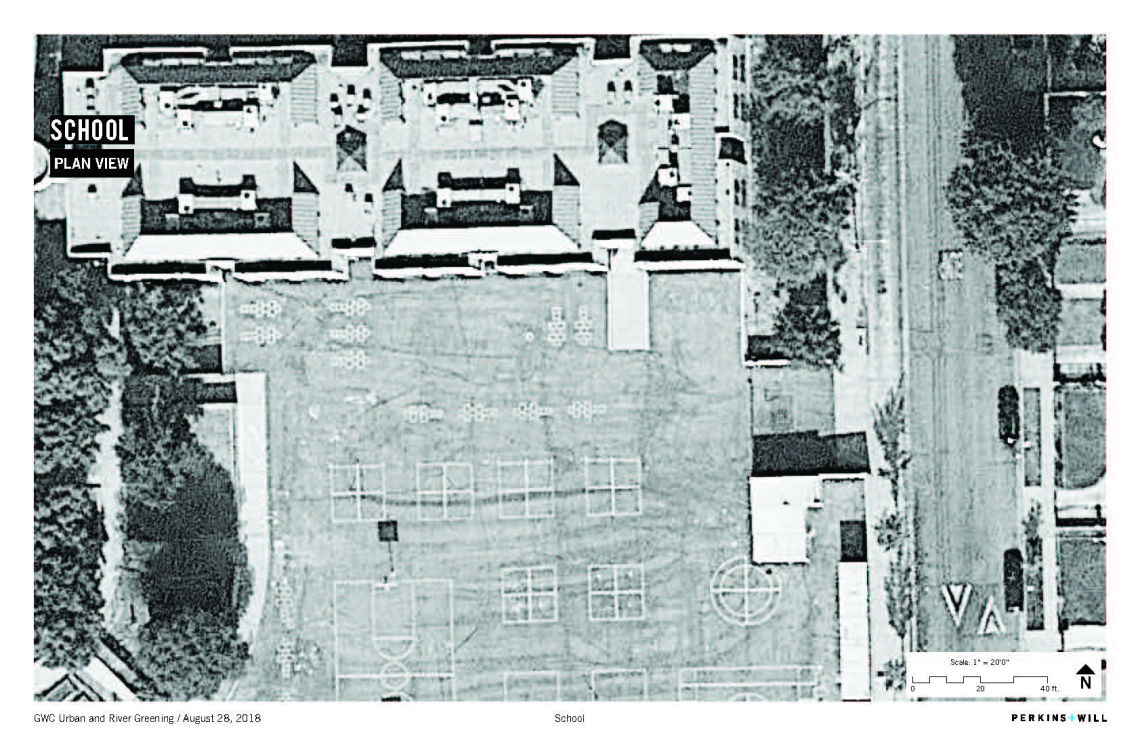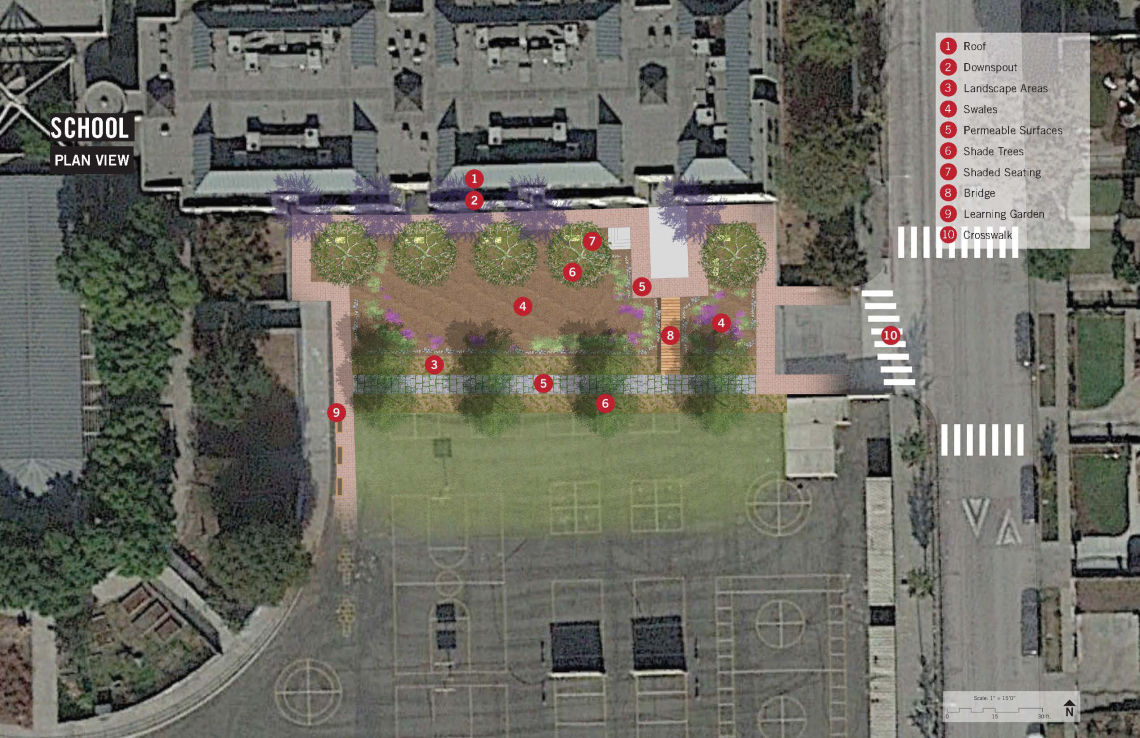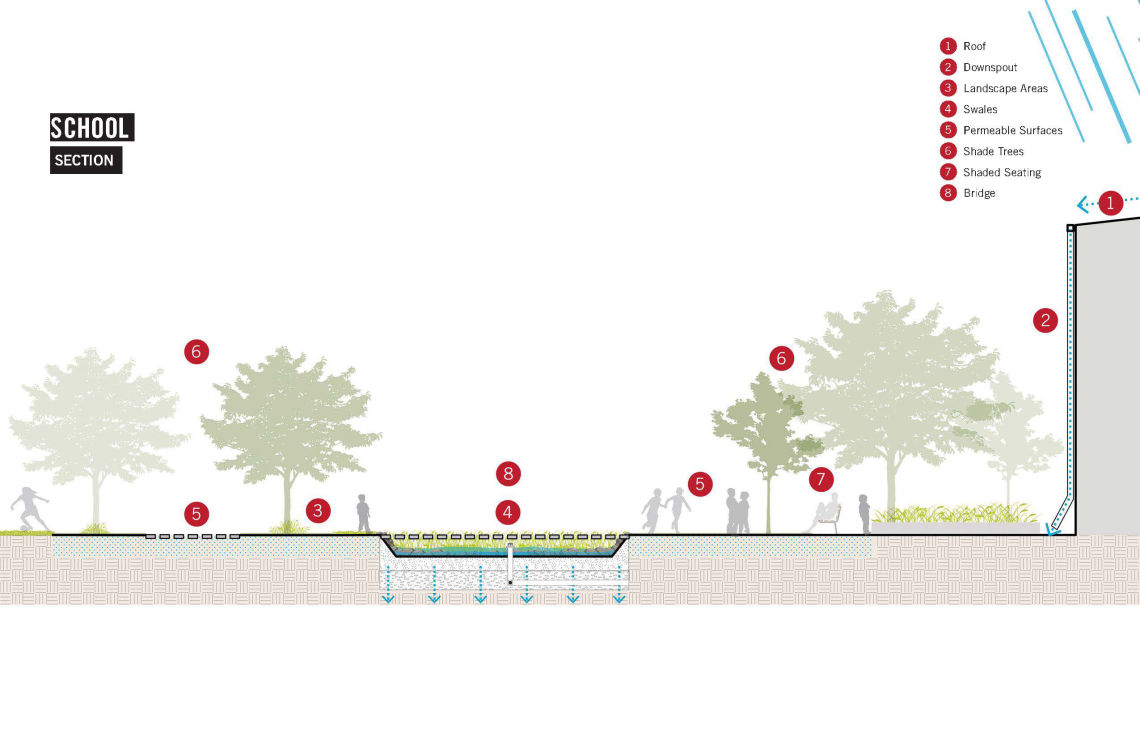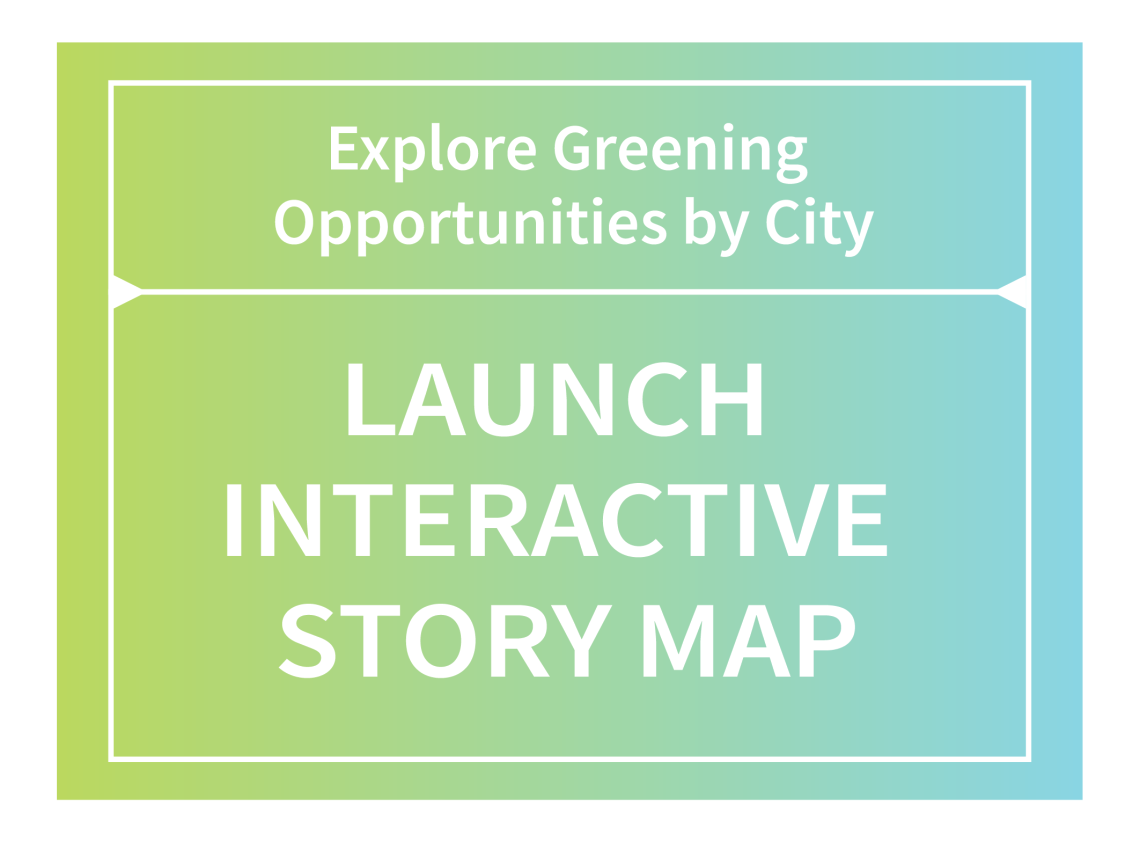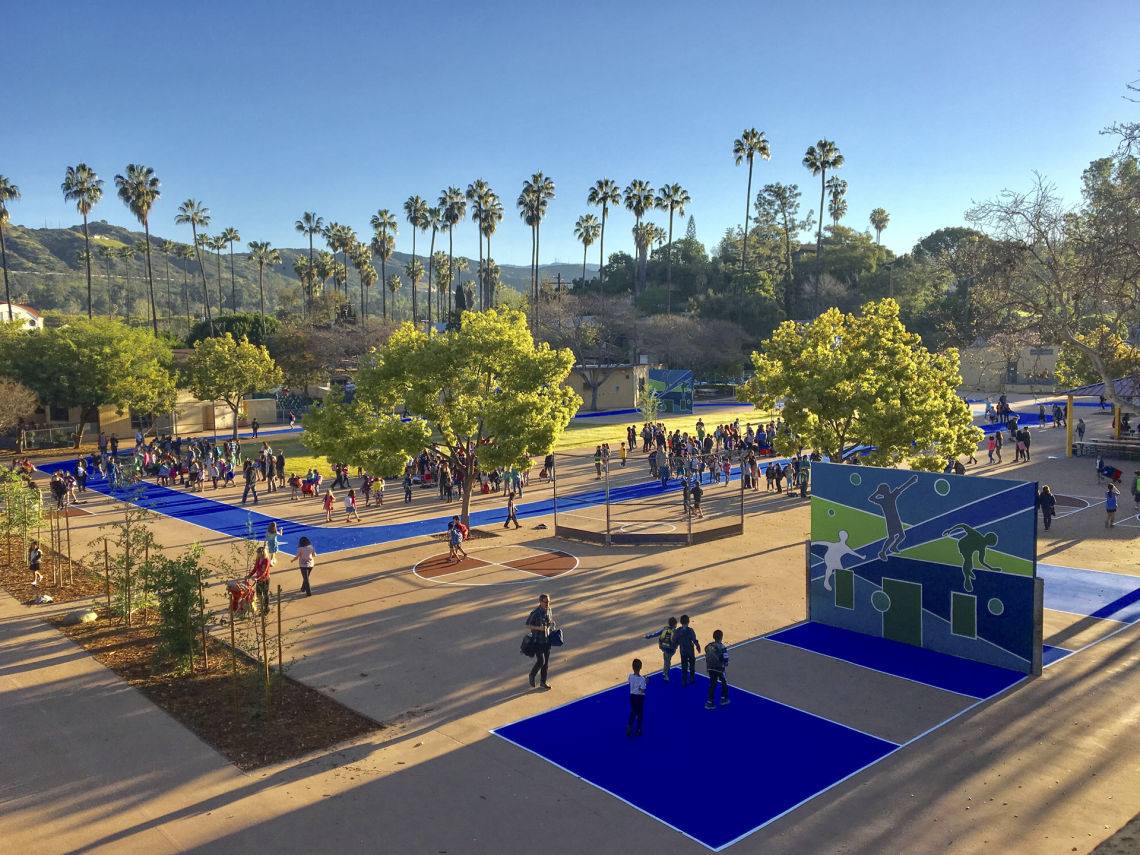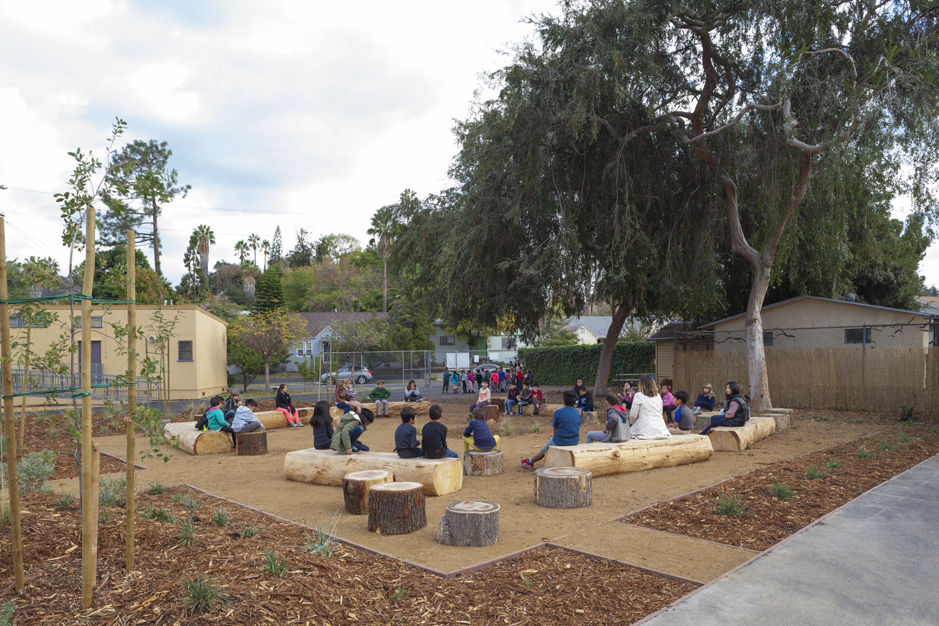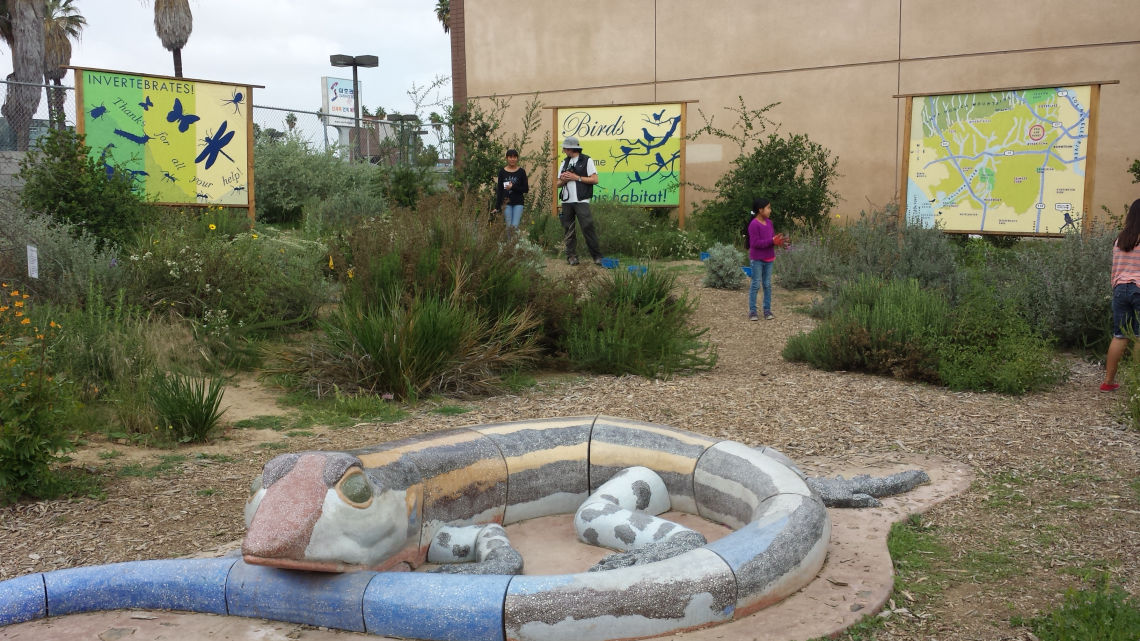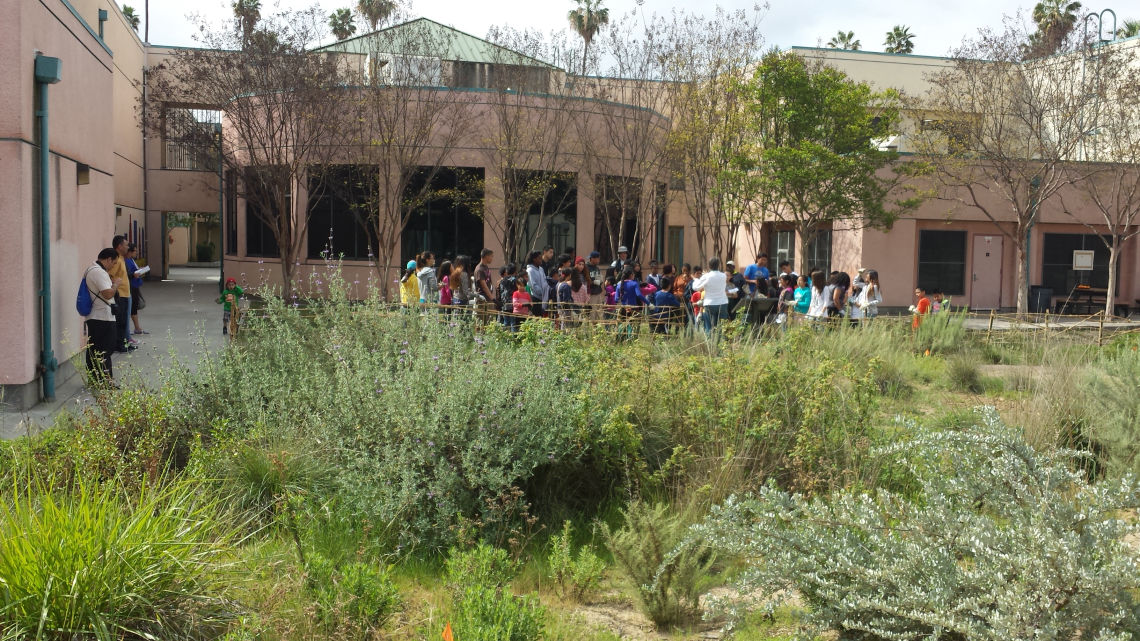Schools
Greener Environments For Learning
Students learn best in natural settings, where they can explore and enjoy imaginative play. And yet, so many of our urban school playgrounds are coated with asphalt, searing hot from a lack of shade, and devoid of nature. Bringing nature into schools can improve learning outcomes, and makes for happier, healthier students.
greenscape title visualizing

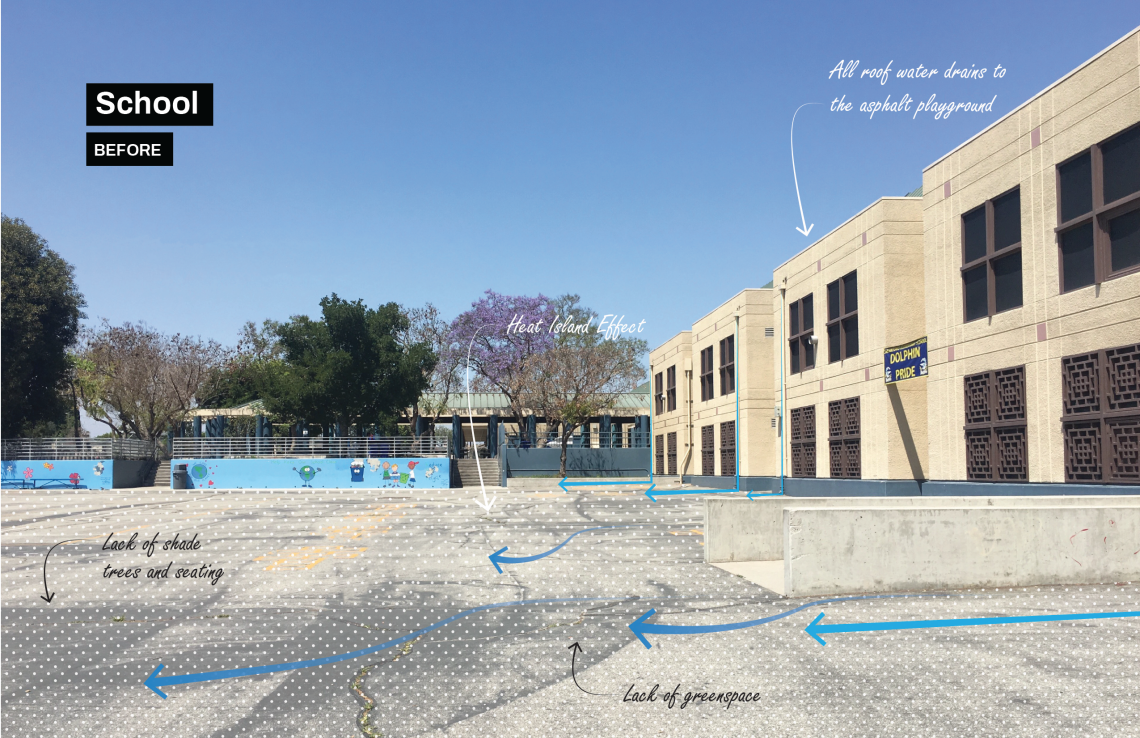
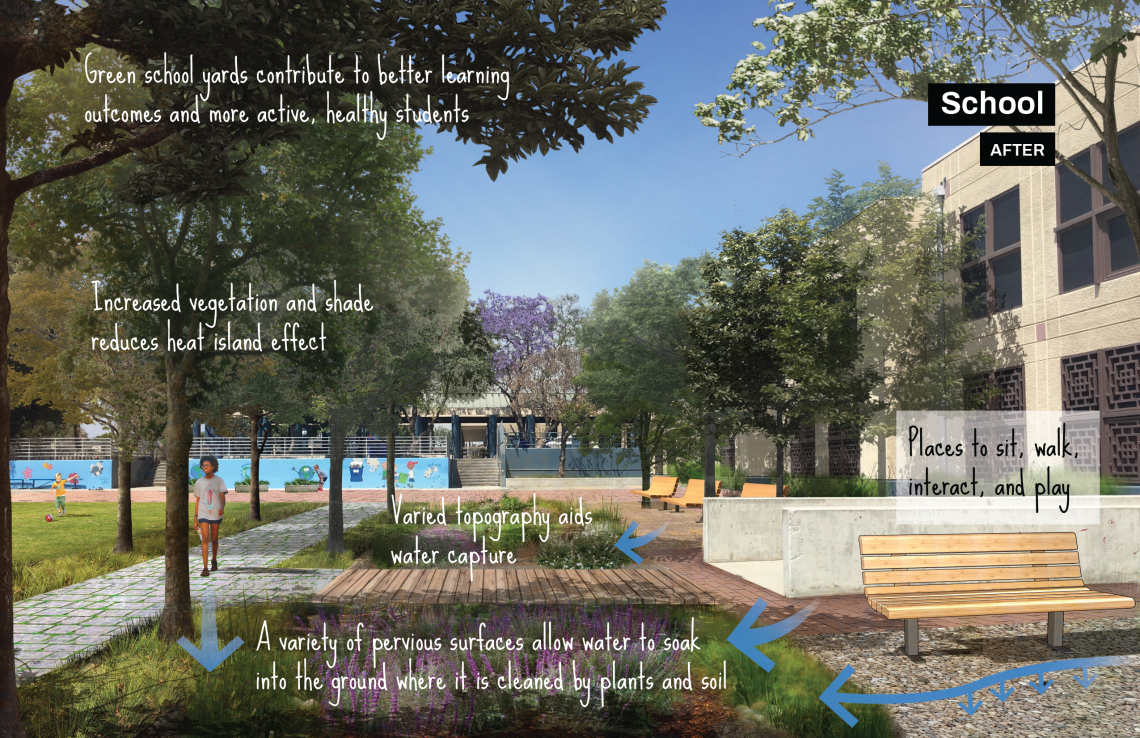
Cultivating Creativity
↓Contact with nature has been shown to benefit creativity, cognitive development, and social relationships. Activity in green settings can reduce symptoms of Attention Deficit Disorder (ADD). [1]
Rooms With A View
↓Even views of nature from classroom windows can improve focus and attention, and reduce depression. [2]
Growing Young Minds
↓Faculty at one Los Angeles elementary school noted that after a greening project replaced some asphalt areas with green spaces, students play more creatively on the schoolyard, and return to the classroom better behaved and ready to learn. [3]
greenscape title onthemap

The Schools greenscape represents all schools in the region but prioritizes K-8 schools that are 2-acres or larger and that have low permeability. Low permeability corresponds with large areas of hot pavement, with little green space for shade or to infiltrate water. This greenscape represents an opportunity to transform play areas with cool and permeable pavements and increase shade, trees, gardens, and other green infrastructure throughout school campuses.
Scroll around and zoom into the map to see Schools throughout the Gateway Cities region. You can also use the layers panel (top left) to toggle on and off all greenscape types. Where are the opportunities in your neighborhood?
greenscape title examples

The first LAUSD School to implement a Proposition 84 Stormwater Grant, the Eagle Rock Elementary School Greening Project was called “the crown jewel” of LAUSD’s greening program by Mark Hovatter, LAUSD Director of Facilities, at the ribbon cutting. Over 17,000 square feet of asphalt was removed and replaced with living landscape. Studio-MLA designed and oversaw construction of the schoolyard.
“They’re running, they’re playing, they’re tumbling. There are all kinds of different surfaces to explore, logs to climb on, stumps to jump off of, so it invites students to a different interaction with the environment than they get on asphalt. Kids are more creative and more physically active. They will have shade when our trees get bigger. Our children need that. It shouldn’t be just at Eagle Rock Elementary. It should be everywhere.” —Stephanie Leach, Principal, Eagle Rock Elementary
In the heart of Pico Union, one of the most densely populated parts of LA, conversion of 6,000 sf of concrete and lawn to native plant habitat brought insects, which brought birds and lizards, which brought small mammals. The resulting outdoor classroom reinforces earth and life sciences, math, and the arts.
The more I put the text book aside, the better the learning happens,” says Linda Dowell, Habitat Steward and 4th grade teacher.
_______
Have a successful example you'd like featured in this vision plan? Fill out this form and let us know!
greenscape title resources

Green Schoolyards America. Research and resources.
International School Grounds Alliance. Research and resources.
Physical Activity and Social Behaviors of Urban Children in Green Playgrounds. Marcella, Raney. (2019). American Journal of Preventative Medicine.
An Environmental Assessment of School Shade Tree Canopy and Implications for Sun Safety Policies: The Los Angeles Unified School District. Council For Watershed Health. (2015). ISPRS International Journal of Geo-Information.
Green Schoolyards. Studio-MLA. (2018).
Sources:
[1] Mental Health & Function. (2018). Green Cities: Good Health. University of Washington College of the Environment.
[2] Heckel, J. (2016). "A Green View Through a Classroom Window Can Improve Students’ Performance, Study Finds." Illinois News Bureau.
[3] Claire Latane. (2018). Interview with Jane Tsong.
Made with ❤️ by TreeStack.io
